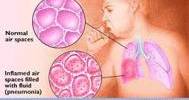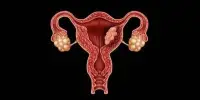A unique protein called brain-derived neurotrophic factor (BDNF) encourages proliferation and neuroplasticity (the birth of new neurons). Higher levels of BDNF are linked to improved memory and general cognition.
BDNF is advantageous for neuroprotection. Altering one’s lifestyle to raise BDNF levels may lessen the risk of dementia-related degenerative brain illnesses and age-related cognitive decline.
Because it promotes neuron growth while maintaining their strength and health, BDNF is sometimes referred to as “Miracle-Gro for the brain” by scientists. Since the beginning of the millennium, scientists have been aware that aerobic exercise raises circulating BDNF levels in both mice and people. Additionally, current research on animals has demonstrated that intermittent fasting enhances hippocampus neurogenesis and BDNF in the mammalian brain (Baik et al., 2019).
A recent study on humans (Gibbons et al., 2023) disentangles the effects of fasting and high or low-intensity exercise on BDNF levels. Vigorous, high-intensity exercise produced the biggest rise in circulating BDNF among these three therapies. The Journal of Physiology published these University of Otago in New Zealand peer-reviewed research findings.
“BDNF has shown great promise in animal models, but pharmaceutical interventions have thus far failed to safely harness the protective power of BDNF in humans,” first author Travis Gibbons said in a news release. “We saw the need to explore non-pharmacological approaches that can preserve the brain’s capacity, which humans can use to naturally increase BDNF to help with healthy aging.”
We are now studying how fasting for longer durations, for example, up to three days, influences BDNF. We are curious whether exercising hard at the start of a fast accelerates the beneficial effects of fasting. Fasting and exercise are rarely studied together. We think fasting and exercise can be used in conjunction to optimize BDNF production in the human brain.
Travis Gibbons
High-Intensity Intervals Boost BDNF More Robustly Than Prolonged Low-Intensity Cardio
Participants in this study went to an exercise physiology lab on several days. One day, each participant performed a prolonged “light” exercise that included 90 minutes of low-intensity pedaling on a stationary bike.
On a different day, each person cycled through six sets of high-intensity interval training. Each maximal effort episode lasted less than a minute and was followed by five further high-intensity periods.
After each workout session, the researchers compared circulating BDNF levels. During these tests, subjects were also given intermittent fasts to see if and how fasting altered BDNF in conjunction with various intensities of stationary cycling.
“Prolonged (90 minutes) light cycling exercise increased plasma- and serum-derived BDNF irrespective of being fed or fasted and seemed to be independent of changes in cerebral shear stress,” the authors explain. “Six minutes of high-intensity cycling intervals increased every metric of circulating BDNF by four to five times more than prolonged low-intensity cycling.”
Notably, the researchers discovered that just six minutes of intense activity dramatically increases the amount of BDNF released compared to 90 minutes of extended low-intensity cardio. Based on these results, Gibbons et al. hypothesize that six-minute bursts of strenuous exercise can support brain function and may more effectively counteract the risk of age-related neurodegeneration than low-intensity exercise.
Six minutes of high-intensity interval training (HIIT) spread throughout the week may be more helpful than extended low-intensity exercise workouts for delaying the onset of neurodegenerative diseases like Parkinson’s and Alzheimer’s.
6 Minutes of High-Intensity Exercise Causes BDNF to Skyrocket
To the best of my knowledge, this is one of the first human studies to elucidate the precise mechanisms by which various “doses” (frequency, duration, and intensity) of cardiorespiratory exercise boost BDNF and maximize exercise’s neuroprotective potential.
The most recent (2023) research reveals that including some high-intensity interval training in your weekly exercise program is preferable to merely performing lengthy low-intensity cardio as “medicine” to maintain brain function as we age.
Despite the fact that Gibbons et al. discovered that short bursts of intense, high-intensity exercise are a far more effective approach to raise BDNF than prolonged sessions of mild, low-intensity exercise, the rationale for these differences is yet unknown. To understand the brain processes that make high-intensity exercise such a powerful strategy to raise circulating BDNF, more investigation is required.
Additionally, more investigation is required to determine how fasting and calorie-restricted diets might be used in combination with various “doses” of exercise to upregulate the expression of BDNF.
Of note: Everyone should seek advice from their primary care physician before making any drastic changes to their lifestyle that could be potentially harmful, such as fasting and rigorous exercise.
“We are now studying how fasting for longer durations, for example, up to three days, influences BDNF. We are curious whether exercising hard at the start of a fast accelerates the beneficial effects of fasting,” Gibbons concludes. “Fasting and exercise are rarely studied together. We think fasting and exercise can be used in conjunction to optimize BDNF production in the human brain.”
















